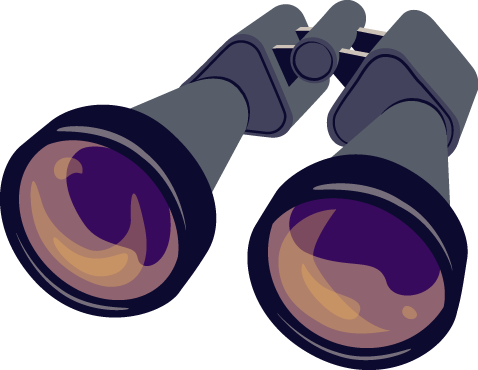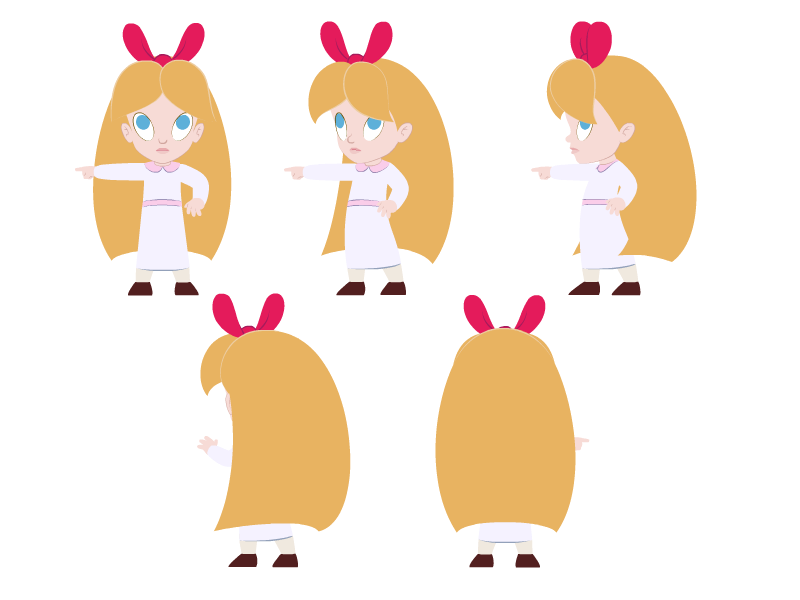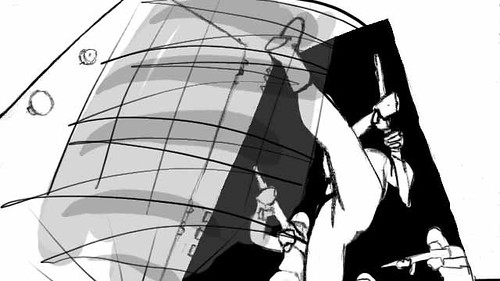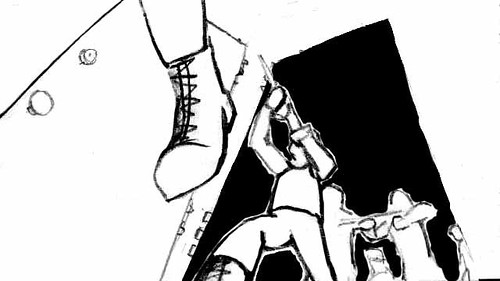The other day I brought the current version of my animatic to work and showed it to Craig McCracken and Lauren Faust. They’re the producers on Foster’s Home for Imaginary Friends and Craig is also the creator and director. Actually, I think Lauren had a lot to do with the development of the show as well. In fact, I’ve heard that Frankie might be modeled after her. Purely unconfirmed rumors.
Anyway, I was excited and nervous to show them my work, because I have a huge amount of respect for both of them. Craig is the one who created and directed The Powerpuff Girls, for instance…. Anyway, I did, in fact, show it to them, and they seemed to have a very positive reaction to it. Specifically, they said it was really funny (they actively laughed in a few places, which is always a good sign especially in small groups of people) and that they were surprised by the twists. They also seemed very impressed with the one little bit of animation I’ve completed in Flash, which was in place in the animatic. They said they really liked the lineless look of it (there are very few outlines on my characters, which isn’t the most common thing in the world of animation).
So that was a real boost. I came away from that meeting being really energized about working on Don’t Fear the Sitter — so much so, in fact, that the next day at work I had a hard time concentrating. “I want to be at home working on my own project,” I was thinking. Hooray for enthusiasm 🙂
Unfortunately I haven’t been able to do any work on the project — at least from an artistic standpoint. I’ve been spending a lot of the last few days working on setting up a revision control server on my old computer. This is something I’ve been meaning to do for a long time. I used revision control on Pink & Ain’t (my undergrad project) and it saved my butt once or twice.
“But David, what is revision control?” I hear you asking. Basically it’s software that keeps a sort of master copy of everything I’m working on and keeps track of all the changes to all the files. It lets me say “hey computer: give me the file ‘scene_12.fla’ as it was on October 19th at 2:33 PM.” Even if I’ve completely changed the file since then, the revision control software will give me the file exactly as it was on that day and time. The practical upshot is that if I ever make a mistake and save over something that I didn’t mean to, it’s not a disaster. I just go back to the last time I committed a change and grab the old file. It also has the added benefit of acting as a data backup of the whole project, in case my hard drive crashes or something (that’s why I’m using a separate computer to run the revision control setup).
Anyway, setting all that up involved first getting my old computer back up and running again (which was significantly easier than I expected), installing Linux on it (again, easier than I expected), installing the revision control server software (significantly harder than I expected — some things about Linux haven’t changed since I last used it in 1996), setting up a home network (which involved buying a new router since I couldn’t find the one I bought about a year ago for just this purpose), and finally getting the two computers to talk to each other in just the right way so that I can get my revision control up and running.
It’s been nearly a week now since I started the process and I think I’m finally finished. I got the project imported onto the revision control server and I think I’m ready to get back to work. That brings me to the next problem.
Well, it’s not really a problem in the grand view of David’s Life, but it’s a small problem in the petit view of David’s Animation Project: I’m leaving for Balkan music and dance camp on Saturday morning. So now that I’m all set up and jazzed about getting some work done, I go away and frolic in the redwoods.
Well, life goes on. Balkan camp is a Good Thing. I look forward to it all year and I’m practically bouncing in my seat in anticipation. David’s Animation Project will have to wait a week or so. It’s possible I’ll have Monday the 3rd off from work, so I might be able to work on it lots then.
One final thing. I’ve been thinking about setting a target delivery date for the final film of Don’t Fear the Sitter. Deadlines help focus the mind. So here’s my thought: the whole thing finished by Prom (the UCLA animation show) next year. That’s just under a year from now. I can do it if I set my mind to it.



